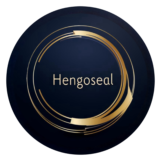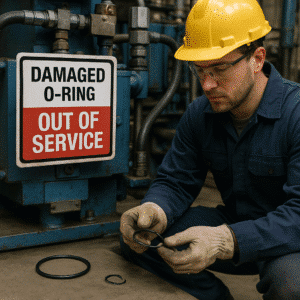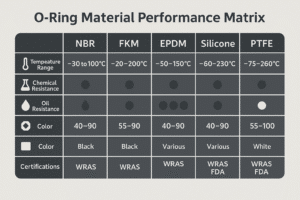Ever wondered how a small rubber ring can prevent a high-pressure hydraulic system from leaking? That’s the power of an Joint torique — compact yet crucial, simple yet essential.
À HENGOSEAL, we’ve been manufacturing and exporting industrial-grade O-rings to over 20 countries. Whether your application involves hydraulic cylinders, pneumatic equipment, or automotive engines, choosing the right O-ring can make or break performance.
What Is an O-Ring and How Does It Work?
Un Joint torique is a circular elastomer seal that blocks the passage of fluids or gases between mechanical parts. When compressed in a groove between two surfaces, it deforms to create a tight seal that resists pressure, temperature changes, and vibration.
In hydraulic systems, this deformation is the key to leak-free operation. You can learn more about their role in fluid power systems in our Guide des joints hydrauliques.
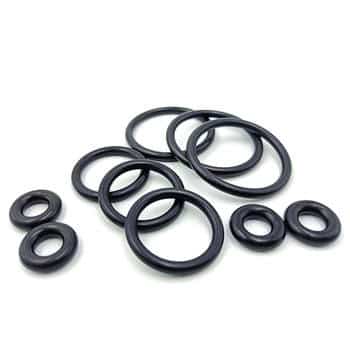
How to Select the Right O-Ring Material for Your Application?
Material selection impacts temperature resistance, chemical compatibility, and lifespan. Here’s a quick reference:
| Matériel | Plage de température (°C) | Principaux points forts | Applications courantes |
|---|---|---|---|
| NBR (nitrile) | -40 à 120 | Excellente résistance à l'huile, économique | Systèmes de carburant, hydraulique |
| FKM (Viton®) | -20 à 230 | High temperature and chemical resistance | Aerospace, engines |
| EPDM | -50 à 150 | Weather, ozone, and steam resistance | Extérieur, CVC |
| PTFE | -200 à 260 | Chemically inert, food-grade | Medical, food, laboratory |
If you’re unsure which to choose, see our detailed Silicone vs FKM O-Rings Comparison for complex environments.
How Do You Measure O-Ring Sizes Correctly?
For the perfect fit, always measure:
- ID (diamètre intérieur)
- OD (diamètre extérieur)
- CS (épaisseur de la section transversale)
Incorrect sizing leads to premature wear and leaks. Use our O-Ring Sizing Guide for step-by-step instructions.
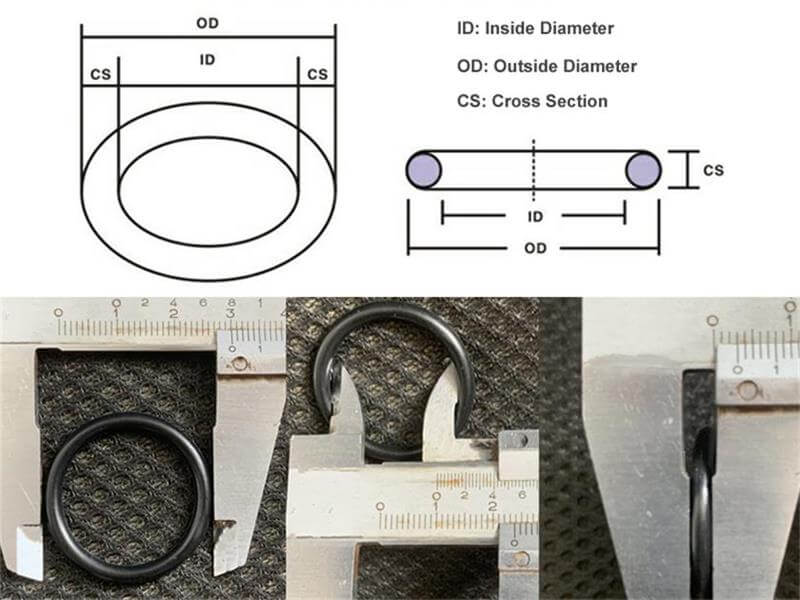
Why Do O-Rings Fail and How Can You Prevent It?
Common causes of O-ring failure include:
- Wrong material choice for temperature or chemicals
- Over-compression or twisting during installation
- Exposure to incompatible fluids
- Reusing aged O-rings that lost elasticity
You can reduce downtime and replacement costs by following the preventive steps in our Seal Failure Prevention Guide.
Can O-Rings Handle Extreme Pressure and Temperature?
Yes, with the right compound.
For example, one manufacturer facing failures at 2500 PSI and 180°C switched to Joints toriques FKM:
- Reduced leakage by 75%
- Extended service life by 5×
- Lowered maintenance costs by 40%
For multi-purpose stock, consider the Kit d'assortiment de joints toriques to handle diverse applications.
How Much Do O-Rings Cost and What Affects Pricing?
Pricing depends on:
- Material type (NBR is economical, FKM/PTFE are premium)
- Taille et tolérance
- Order quantity (bulk orders reduce cost per unit)
We explain pricing strategies in our Guide de sélection et de coût des joints toriques.

Where to Get Reliable O-Rings for Industrial Applications
If you need consistent performance and dependable supply:
- Browse our O-Ring Product Range including NBR, FKM, EPDM, and PTFE options
- Request technical drawings, OEM branding, and custom sizes
- Access our Guide du kit de joints toriques to optimize your maintenance inventory
📧 [email protected] | 📱 WhatsApp : +86 17622979498
Related Topics You May Find Useful
- Hydraulic O-Rings: Types, Uses & Selection
- High-Pressure Hydraulic O-Rings: How to Choose the Most Durable Seals
- Buna-N vs EPDM O-Rings: Which One Should You Choose?
- EPDM vs FKM O-Rings: Which Material Is Right for Your Application?
- Prevent O-Ring Leakage Under High Pressure
